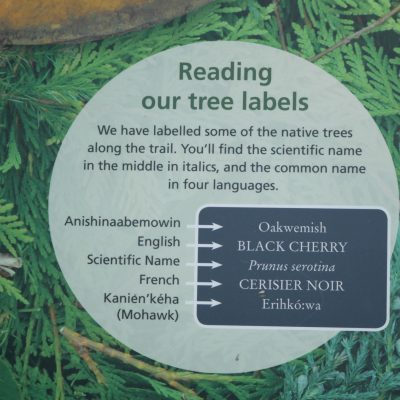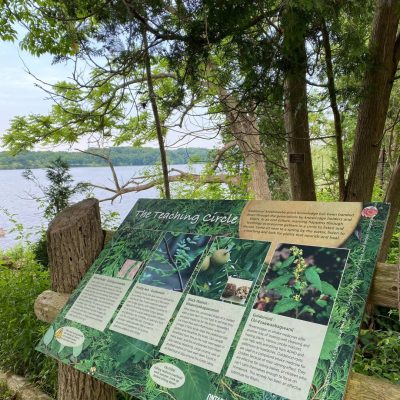| Membership | Price (+HST) |
|---|---|
| Single | $85/year |
| Single Plus | $120/year |
| Family | $130/year |
| Family Plus | $175/year |
| Contributing | $300/year |
| Supporting | $600/year |
| Sustaining | $1,000/year |
| Benefactor's Circle | $2,500/year |
| Director's Circle | $5,000/year |
| President's Circle | $10,000/year |
Learning and Reflecting on Traditional Indigenous Knowledge
By Dr. David Galbraith, Head of Science, and Barbara McKean, Head of Education, Royal Botanical Gardens
Indigenous cultures, making use of oral traditions and the practical experience of millennia of living on the land, have subtle and elegant connections to plants of all kinds.
In 2015 the Truth and Reconciliation Commission released its report, and Canada had to pay attention to the long history of attempts by successive generations of government and religious leaders to erase Indigenous Knowledge. Central to the knowledge and resources of any culture is knowledge about plants. For Indigenous communities around the world, plants form a web of life, knowledge, practice, and tradition that becomes imbedded within language, faith traditions, medicinal and culinary practices – indeed, the connection is so close that after language itself it would be hard to find another category of knowledge that is so central to Indigenous cultures.
In keeping with the principles of the Calls to Action of the Truth and Reconciliation Commission in support of education, and as a step in acknowledging and celebrating Indigenous plant knowledge, in 2017 Royal Botanical Gardens opened Enji naagdowing Anishinaabe waadiziwin (The Journey to Anishinaabe Knowledge) on the north shore of Cootes Paradise Marsh. Walking along this trail through the woods and along Cootes Paradise Marsh is an enjoyable way to connect to Traditional Indigenous Knowledge about plants as shared with us by Anishinaabe (Ojibwe) knowledge keepers. The trail was developed in 2016-2017 in consultation with Joseph Pitawanakwat, an Anishinaabe Plant Knowledge specialist, and members of the Mississaugas of the Credit First Nation.


Several themed areas along the 1.1 km route interpret medicine plants: those used in Anishinaabe culture past and present. Along with interpretive panels focused on each theme area, trees along the way are labelled with names in Anishinaabemowin and Kanien’kéha (Mohawk), and two rest stations include audio boxes with recorded Indigenous teachings.
Note that this trail is hilly and can be muddy; trail map and visiting information.
Part of the Cootes Paradise Trail System
Established in 1927 for its significance as a migratory bird stopover, Cootes Paradise is RBG’s largest and most diverse sanctuary at over 600 hectares. The area features a 320-hectare river-mouth marsh, 16 creeks and 25 kilometres of shoreline.
Access this trail at RBG’s Arboretum, 16 Old Guelph Road, Hamilton ON.
More from the RBG Blog
Check out RBG’s blog for announcements, articles, and more from Canada’s largest botanical garden.
Want to be sure you hear first? Sign up for our weekly e-newsletter to hear about upcoming events, weekend activities, articles, and more!

















